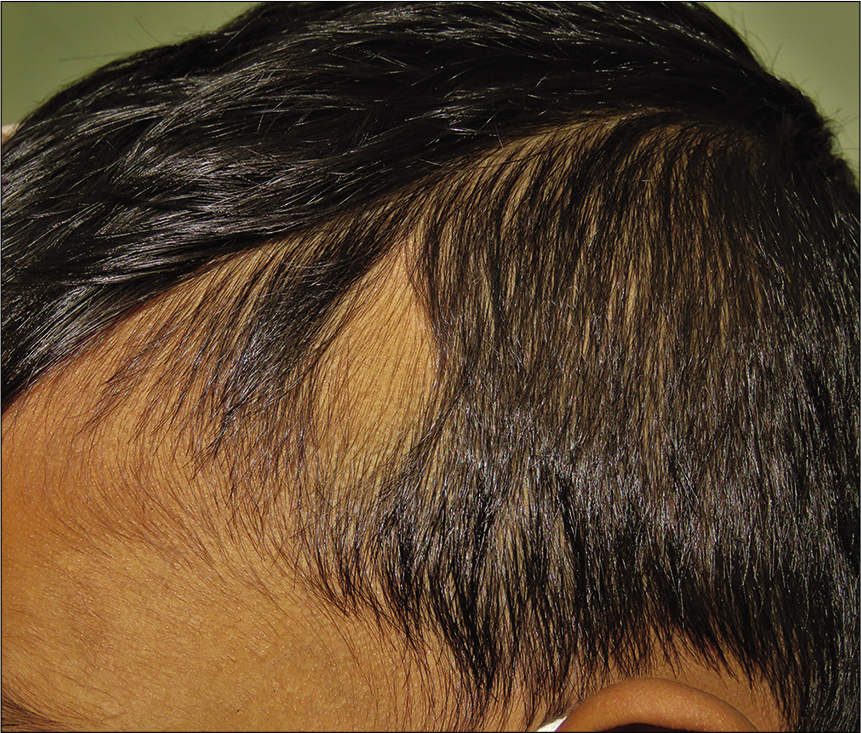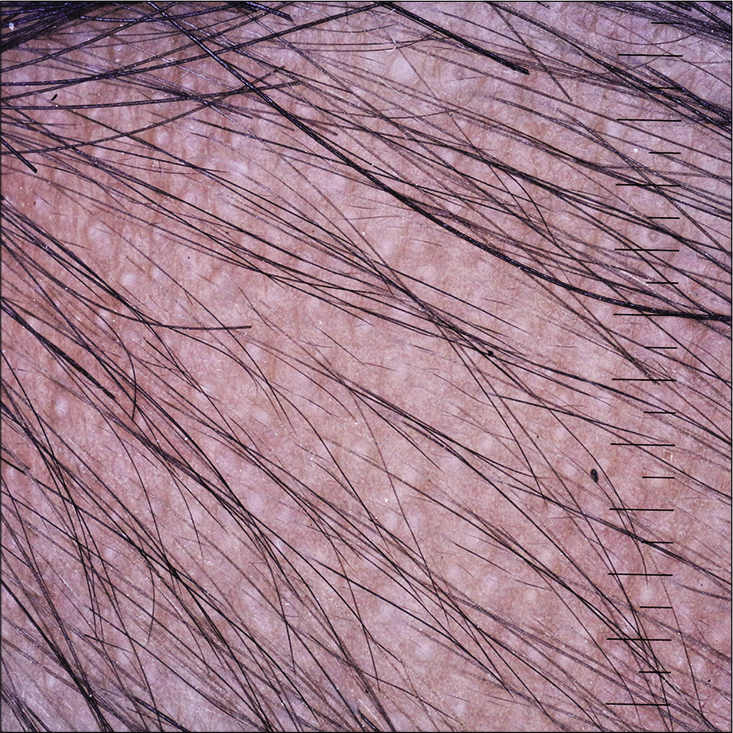Translate this page into:
Congenital triangular alopecia
*Corresponding author: Feroze Kaliyadan, Department of Dermatology, Sree Narayana Institute of Medical Sciences, Ernakulam, Kerala, India. ferozkal@gmail.com
-
Received: ,
Accepted: ,
How to cite this article: Kaliyadan F, Varghese S. Congenital triangular alopecia. J Skin Sex Transm Dis 2024;6:101-2. doi: 10.25259/JSSTD_82_2021
A 3-year-old male child presented to the dermatology outpatient department with a localized area of hair loss, over his left temporal area, present since birth. The patch had shown a minimal increase in size since then, and according to the parents, the patch never showed normal hair growth at any stage.
On examination, a triangular area of alopecia, around 3 × 2 cm, was seen over the left temporal area, with the apex of the triangle pointing toward the vertex. There was no sign of any inflammation over the affected area [Figure 1].

- Triangular area of alopecia over the left temporal region of the scalp.
Trichoscopy showed intact follicular openings and vellus hairs in the patch of alopecia, with normal terminal hairs surrounding it. There was no evidence of any black dots, yellow dots, broken hairs, cadaverized hairs, exclamation mark hairs, or any other atypical hairs. There were no specific vascular patterns seen [Figure 2].

- Trichoscopy showing intact follicular opening and vellus hairs in a patient with congenital triangular alopecia (Dermlite Foto Pro, polarized light, 10×).
Congenital triangular alopecia (CTA), also known as temporal triangular alopecia, presents as a unilateral, triangular, or lancet-shaped area of hair loss, usually manifesting at birth or early childhood.
It is important to convey the benign nature of the condition to parents. It is also important to convey that the condition does not respond well to medical management. Trichoscopy is a useful tool to differentiate CTA from other differential diagnoses such as alopecia areata, tinea capitis, and aplasia cutis congenita. The typical trichoscopic features seen in CTA are – normal, intact follicular openings with vellus hairs, in the patch, with the surrounding area showing normal terminal hairs.
Ethical approval
The Institutional Review Board approval is not required.
Declaration of patient consent
Not required as patients identity is not disclosed or compromised.
Conflicts of interest
Dr. Feroze Kaliyadan is on the editorial board of the Journal.
Use of artificial intelligence (AI)-assisted technology for manuscript preparation
The authors confirm that there was no use of artificial intelligence (AI)-assisted technology for assisting in the writing or editing of the manuscript and no images were manipulated using AI.
Financial support and sponsorship
Nil.





